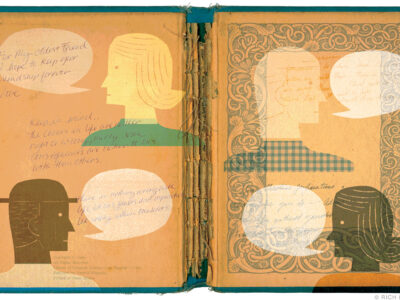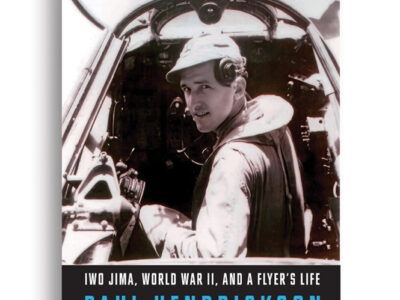Leo Strauss and the Politics of American Empire By Anne Norton, Faculty. (Yale University Press, 2004. $25.00.) The teachings of the late political theorist Leo Strauss have received new attention in light of the influence of some of his students in shaping the agenda of the current Bush administration. Dr. Anne Norton, professor of political science at Penn and a political theorist trained by some of Strauss’s students, examines how prominent neoconservatives and senior members of the Bush administration have appropriated (or, in her view, misappropriated) Strauss’s ideas. Order this book
Birth of a Salesman: The Transformation of Selling in America By Walter A. Friedman C’84. (Harvard University Press 2004. $27.95.) From the mid-19th century to the beginning of World War II, the American economy was transformed by an increasingly professional breed of salesmen, whose stories and insights are chronicled in this well-researched book. “The intense effort to standardize salesmanship distinguished the growth of capitalism in America from that in other countries,” argues Walter Friedman, an historian at Harvard Business School and coeditor of Business History Review. Order this book
Woody Allen and Philosophy Edited by Mark Conard and Aeon J. Skoble C’85. (Open Court, 2004. $17.95.) One of Woody Allen’s characters once confessed to having been thrown out of college for cheating on his metaphysics exam—specifically, for having “looked into the soul of the boy sitting next to me.” Allen’s films often tackle philosophical issues (some characters are philosophy professors!), and this new collection of essays—subtitled, “You Mean My Whole Fallacy is Wrong?”—is part of the Popular Culture and Philosophy series. Skoble is assistant professor of philosophy at Bridgewater State College in Massachusetts. Order this book
The Cities, the Towns, the Crowds: The Paintings of Robert Spencer By Brian H. Peterson CGS’81. (University of Pennsylvania Press, 2004. $39.95.) Robert Spencer was among the most recognizable of the Pennsylvania impressionist painters based in the Bucks County village of New Hope. He liked to paint buildings—the more beat-up the better—and the people who lived and worked in them. After he committed suicide in 1931, the celebrated collector Duncan Phillips hailed him as “a rebel always against the standardized and stereotyped in art.” Brian Peterson, senior curator at the James A. Michener Art Museum in Doylestown, tells the story of Spencer’s colorful, tragic life and illustrates it with some 75 color images from major museums and private collections. Order this book




